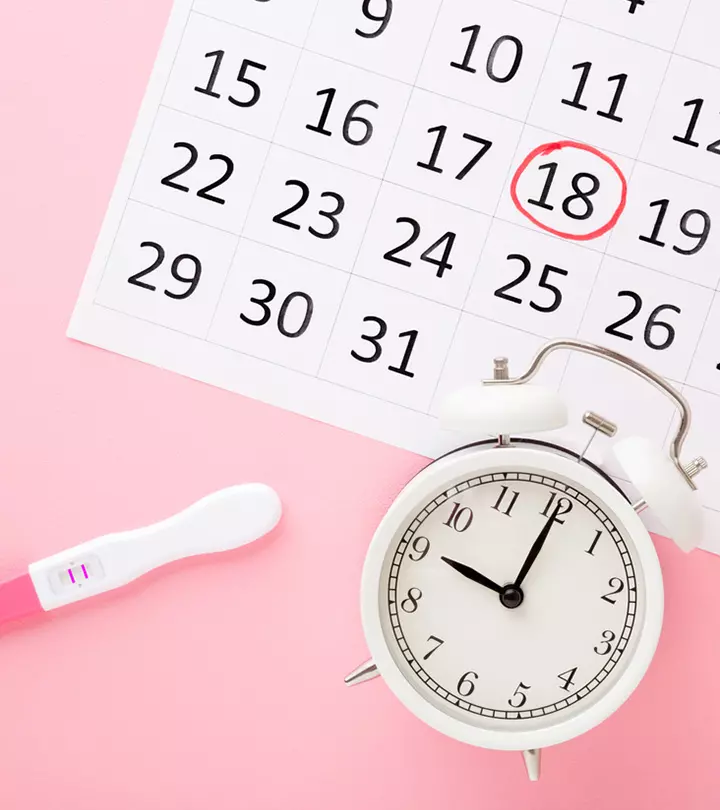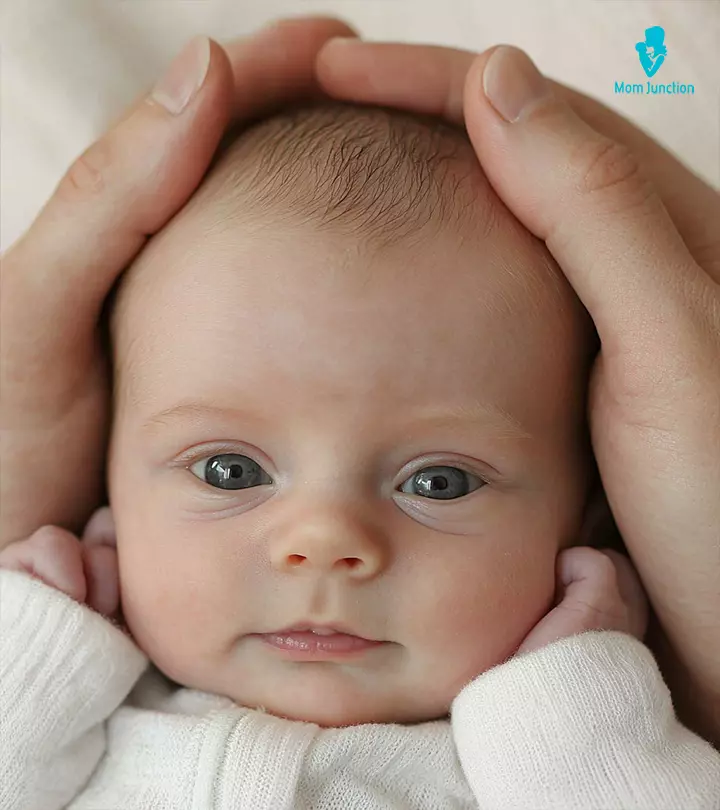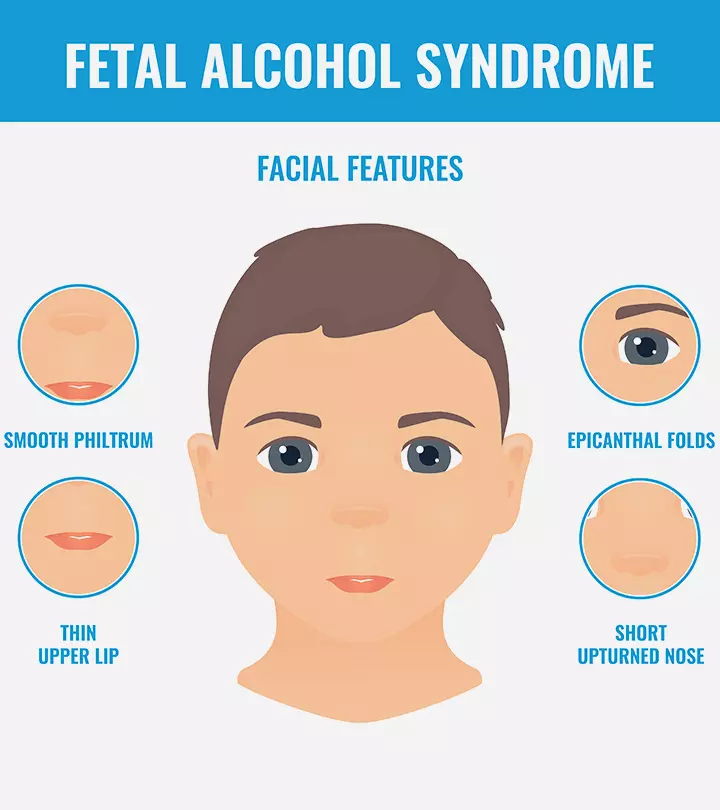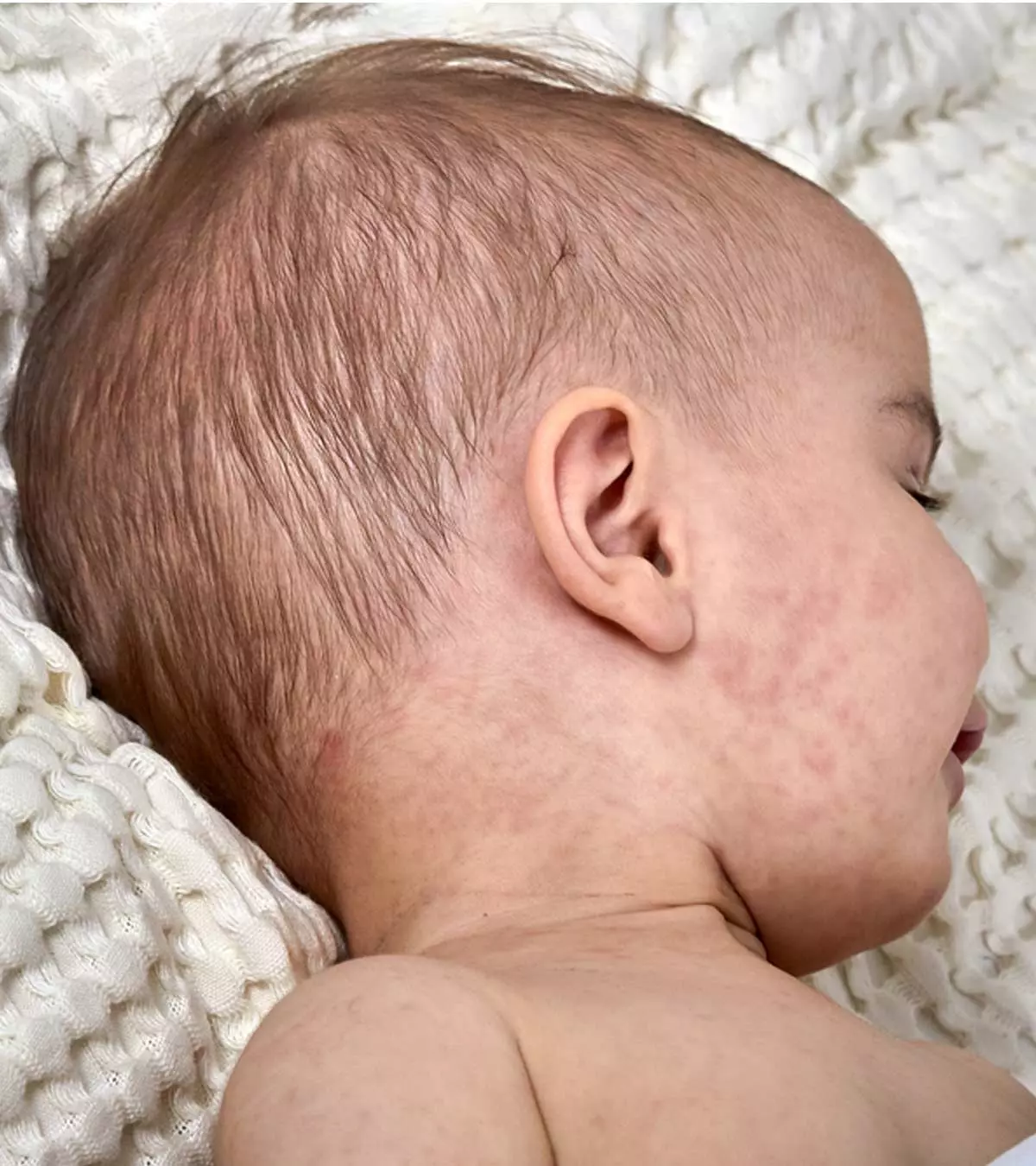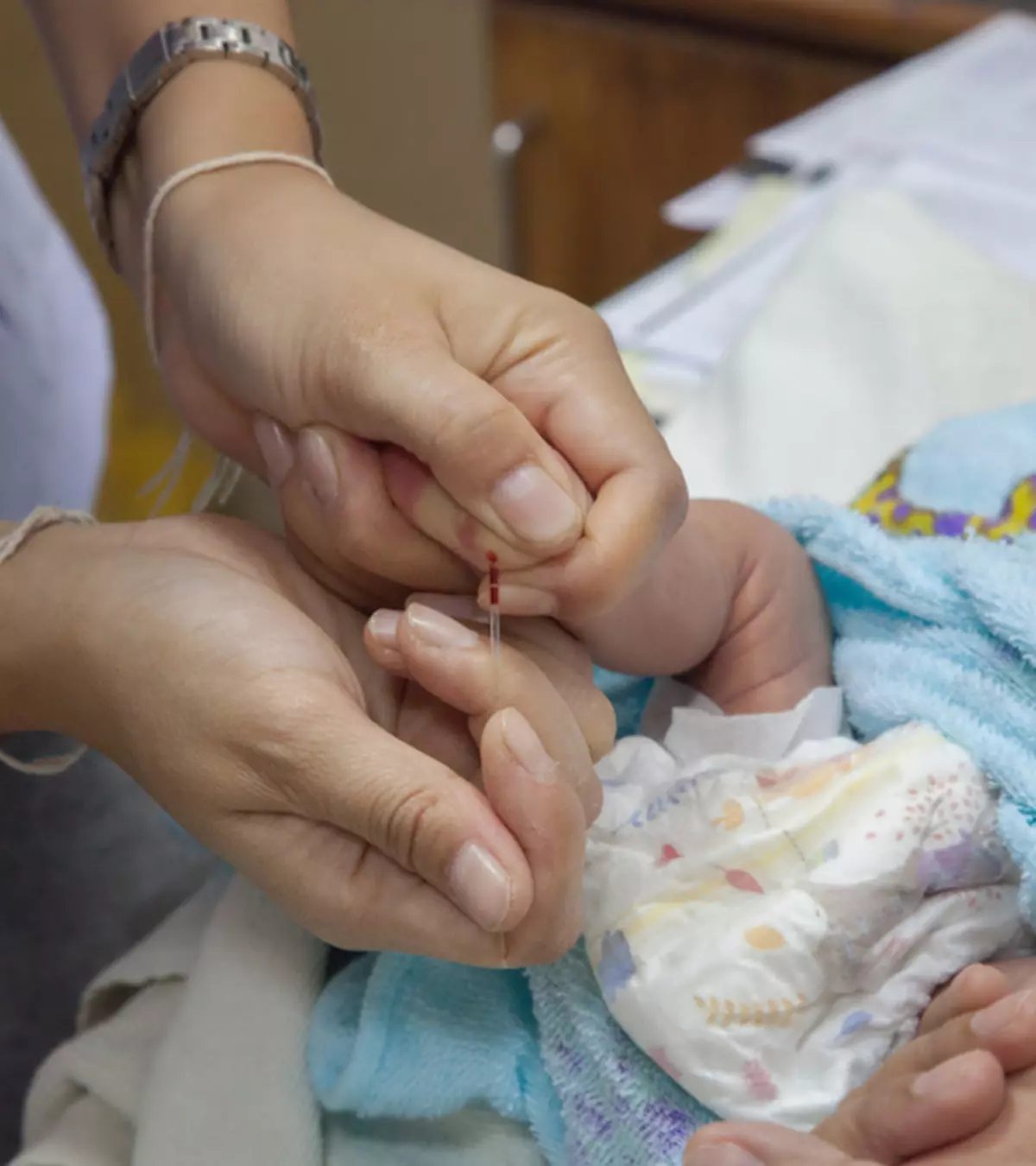
Image: ShutterStock

The Coombs’ test or antiglobulin test (AGT) is a blood test that helps detect the presence of antibodies against red blood cells (erythrocytes) in the body, which can cause hemolysis. This can lead to hemolytic disease in newborns, also known as erythroblastosis fetalis. A positive Coombs test in newborns indicates two health problems – anemia and jaundice.
However, it doesn’t necessarily mean that the baby has anemia or jaundice but rather that they should be checked for these conditions. Blood samples are taken from the neonate’s umbilical cord during delivery or the veins after birth to conduct this test.
Read on to learn more about different types of Coombs tests, their interpretations, and the outcomes for babies with a positive Coombs test.
Key Pointers
- Coombs test detects the antibodies present against red blood cells in a newborn.
- A positive Coombs test may indicate autoimmune hemolytic anemia or jaundice in babies.
- Consult a doctor if babies show signs, such as breathing difficulties, poor feeding, or excessive yellowing of skin and eyes.
- In most babies, the condition resolves after a few weeks from birth.
Types Of Coombs Tests
There are two types of Coombs tests to detect various pathologies (1).
1. Direct Coombs test
Direct Coombs test detects antibodies attached to the red blood cells. After collecting the blood sample, the red blood cells are washed in the laboratory to remove the plasma and unbound antibodies. The washed red blood cells are incubated with Coombs reagent (anti-human globulin) in the next step.
The test is considered positive if the red blood cells agglutinate, that is, appear clumpy or sticky. This indicates that the antibodies or complement proteins are attached to the red blood cells causing their destruction. A baby with a positive direct Coombs test may have autoimmune hemolytic anemia.
2. Indirect Coombs test
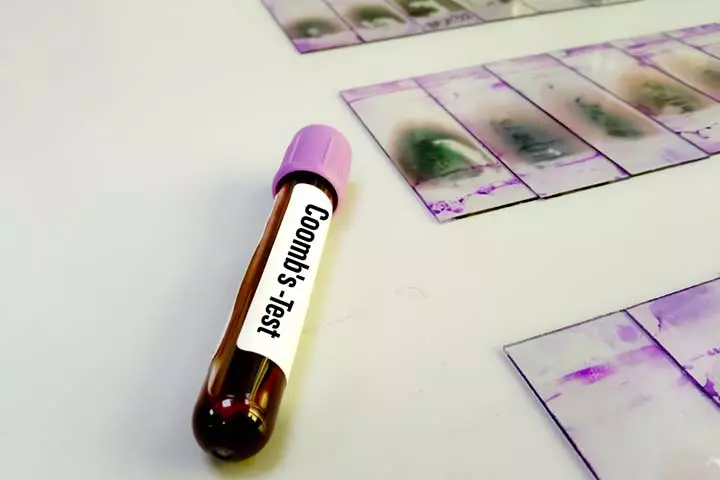
Image: Shutterstock
Indirect Coombs test detects free antibodies in the blood. These antibodies are not attached to the red blood cells and work against foreign red blood cells. In the laboratory, the blood serum is extracted and incubated with foreign red blood cells and anti-human globulin or Coombs reagent. Indirect Coombs test is considered positive if agglutination is observed.
Indirect Coombs tests help diagnose reactions to blood transfusion. It is also used in prenatal testing to check for Rh compatibility issues in pregnant women. Mothers with Rh-negative blood groups should take an Rh immunoglobulin shot during pregnancy to avoid Rh incompatibility-related complications in their subsequent pregnancies (2).
What Problems Are Seen In Coombs Positive Babies?

Image: Shutterstock
The health problems in positive direct and indirect Coombs tests may vary. These may include (3):
1. Autoimmune hemolytic anemia
In this condition, the immune system destroys the red blood cells, resulting in anemia. The lifespan of red blood cells is 120 days, but they are destroyed earlier in this condition. It could lead to anemia since there are inadequate mature cells to compensate for the loss.
Swelling under the skin is one of the common symptoms of hemolytic anemia in babies. Destruction of red blood cells could also cause jaundice.
 Point to consider
Point to consider2. Jaundice
Yellow discoloration of skin and whites of the eyes (sclera) is called jaundice. It is caused by excess bilirubin, a byproduct of red blood cell destruction. Babies with indirect or direct Coombs positive test could have newborn jaundice since both attached and free antibodies damage the red blood cells.
Note: Coombs negative babies may also develop jaundice due to immature liver function, breast milk, or erythrocyte disorders.
How To Take Care Of A Coombs Positive Baby?

Image: Shutterstock
There is no need for specific treatment in some babies with mild elevation of bilirubin levels. However, babies are closely monitored for changes in bilirubin levels and symptoms. Treatment options may include the following.
- Adequate feeding is recommended since poor feeding may worsen jaundice due to other reasons
- IntravenousiAdministering medications through a person's veins with the help of a needle. fluids are given if required
- Medications to keep blood pressure normal
- IVIG-intra venus immunoglobulin may be required in some cases to neutralize preformed antibodies
- PhototherapyiThe use of ultraviolet light to treat certain skin conditions, such as psoriasis, eczema, and dermatitis. is given for jaundice
- Severe cases may require a blood transfusion
According to a study conducted by multiple institutes, the occurrence of severe neonatal jaundice in the United States is estimated to be 1.73%. You may discuss the appropriate treatment plan with a pediatrician.
 Did you know?
Did you know?When Can A Coombs Positive Newborn Go Home?

Image: Shutterstock
Coombs positive babies can go home in usual time after birth unless there are complications of high bilirubin levels and anemia. However, you may need to visit a pediatrician within a few days for blood tests to assess the progress.
Sometimes, jaundice and anemia may worsen after going home. You may call the healthcare provider if you notice any of these signs and symptoms (4).
- Increased yellowing of the skin and eye
- Poor feeding
- Breathing difficulties or fast breathing
- PalloriPale or faded skin color at a specific region or various regions of the body, usually due to trauma or underlying illness.
- Sleepiness
Vickiesha, a mother of six, shares how her baby’s bilirubin levels down. Her baby, Serenity, had a positive Coombs test, and her bilirubin levels were back up to 17 after a few days home from the NICU.
She says, “The pediatric home health company came out and delivered a bilirubin blanket, so she (my daughter) could have phototherapy at home. It was rough… We have a pediatric appointment in about two hours to get her bilirubin levels read again; let’s see what these levels are today… We did it and her bilirubin levels are down. One of the things I did was use a bilirubin blanket last night and this was just a one-day thing so I’m super shocked (i).”
Long-term Complications In Coombs Positive Infants
Most Coombs positive babies do not develop any long-term problems since the maternal antibodies clear within a few weeks after birth. The immune reaction slowly resolves, and the formation of new blood cells helps the infant recover completely in a few weeks (4).
If left untreated, very high bilirubin levels may cause brain damage known as kernicterus and other issues, such as cerebral palsyiA set of disorders affecting a person's ability to move, balance, and maintain proper postures. or deafness. However, in most cases, jaundice is diagnosed and treated before the bilirubin reaches a level high enough to cause complications.
What Happens If The Coombs Test Is Negative?
A negative result (no agglutination present) on direct and indirect Coombs tests means no antibodies or complement proteins are against the red blood cells. It is possible to develop jaundice and hemolytic anemia in babies with negative Coombs tests due to other medical conditions that do not involve antibodies against the red blood cells. Newborns may also develop physiological jaundice and breast milk jaundice during the initial days of life (5).
Frequently Asked Questions
1. How long do positive Coombs test results last?
If a baby’s Coombs test results show positive due to maternal antibodies, they may return to normal within two months. Moreover, most Coombs-positive babies do not have any long-term effects due to this phenomenon. However, checking for any atypical signs following a positive Coombs test in your baby is essential. Speak to a doctor if you have any concerns (4).
2. Why do newborns undergo the Coombs test?
A pediatrician may suggest a Coombs test if they suspect jaundice in your newborn. The test is also helpful in detecting foreign antibodies, which may lead to blood disorders such as hemolysis (5).
3. How often should newborns receive a Coombs test?
The frequency of administration of the Coombs test depends on several factors, such as the healthcare policies of the hospital, the individual circumstances of the patient, and the healthcare professional’s recommendation. It is best to consult your pediatrician about the timing and frequency of the administration of the Coombs test.
Coombs test helps detect antibodies against red blood cells and determine any related underlying issues. If you are an Rh-negativeiAn Rh status that indicates that the red blood cells lack the Rh factor protein (a blood group compatibility factor). mother, you may consider testing and taking Rh immunoglobulin injections to avoid complications. Severe cases can also be treated with intrauterineiA term used to describe an intervention or location inside the uterus, such as a device or development of a fetus. blood transfusions. If the baby has a positive Coombs test, they may require close monitoring, and their health condition will eventually improve over time.
Infographic Title: What Causes A False Positive Coombs Test In Newborns?
There can be various clinical situations where the Coombs test can be positive without the presence of red blood cell destruction or hemolysis in the newborn. Go through the below infographic to know some of the common reasons for a false positive Coombs test in newborns.
Some thing wrong with infographic shortcode. please verify shortcode syntax
Personal Experience: Source
MomJunction articles include first-hand experiences to provide you with better insights through real-life narratives. Here are the sources of personal accounts referenced in this article.
i. Newborn update| coombs positive treatment| jaundice| Nicu grad;https://www.youtube.com/watch?v=yI7cW8Xg2xk&feature=youtu.be
References
1. Coombs Test; Johns Hopkins Lupus Center
2. The Rh Factor: How It Can Affect Your Pregnancy; American College of Obstetricians and Gynecologists
3. Coombs Antibody Test (Indirect and Direct); Michigan Medicine; University of Michigan
4. Direct Coombs Test (DCT);; National Health Service
5. The Coombs Test; Stanford Medicine
6. Coombs Test; Mount Sinai
Community Experiences
Join the conversation and become a part of our nurturing community! Share your stories, experiences, and insights to connect with fellow parents.
Read full bio of Dr. Aarti R. Motiani
Read full bio of Dr Bisny T. Joseph
Read full bio of Rohit Garoo
Read full bio of Shinta Liz Sunny








